Aug. 21 – Labor Day, Sept. 1, 2025
89 Days 21 Hours 10 Mins
Grandstand Timeline
The original Grandstand was built in 1885 (the first year of the permanent fairgrounds), along with a one-mile racetrack, which took up a quarter of the fairgrounds. The original Grandstand was razed in 1891, and a second Grandstand was constructed in 1892 and razed after the 1908 fair. The current Grandstand that is the heart of the fairgrounds was built in 1909. This timeline correlates to the timeline posted on the south side of the Grandstand walls. Here is a look at its rich history.
1885-1909

The first Grandstand was built in 1885 and was made of wood and double-decked. It seated approximately 12,000 people for viewing horse races on the one-mile track.

The second Grandstand, built in 1892, was made of wood and iron and seated approximately 12,000 people at full capacity.
1899: Electricity was added to the fairgrounds. Lighting the fairgrounds and buildings allowed fair guests to come to the fair in the evening – and thus the tradition of an evening Grandstand show and fireworks began.
1899: A half-mile racetrack was built within the one-mile track.

1900: For a short time, agricultural exhibits were housed on the southwest side of the Grandstand.

1901: On Sept. 2, the opening day of the State Fair, Vice President Teddy Roosevelt spoke to the Grandstand audience and orated the famous words, “Speak softly and carry a big stick; you will go far.”
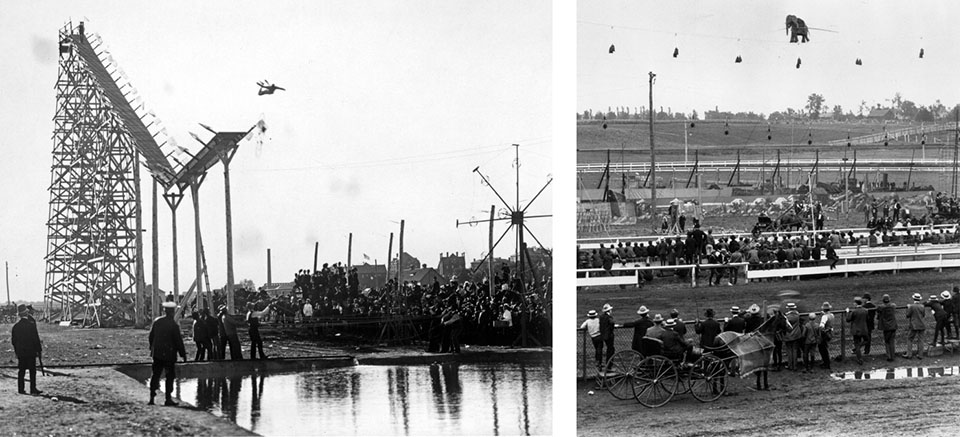
1900s: Horse races were the main event at the Grandstand for decades, but interspersed with races were various thrills, including Daredevil Schreyer and his flying bicycle leap and an “elephant” on a tightrope.

1900s: Prize-winning livestock housed in the stock barns were later paraded in front of the Grandstand audience. These parades occurred through the 1930s and at times were over a mile long.
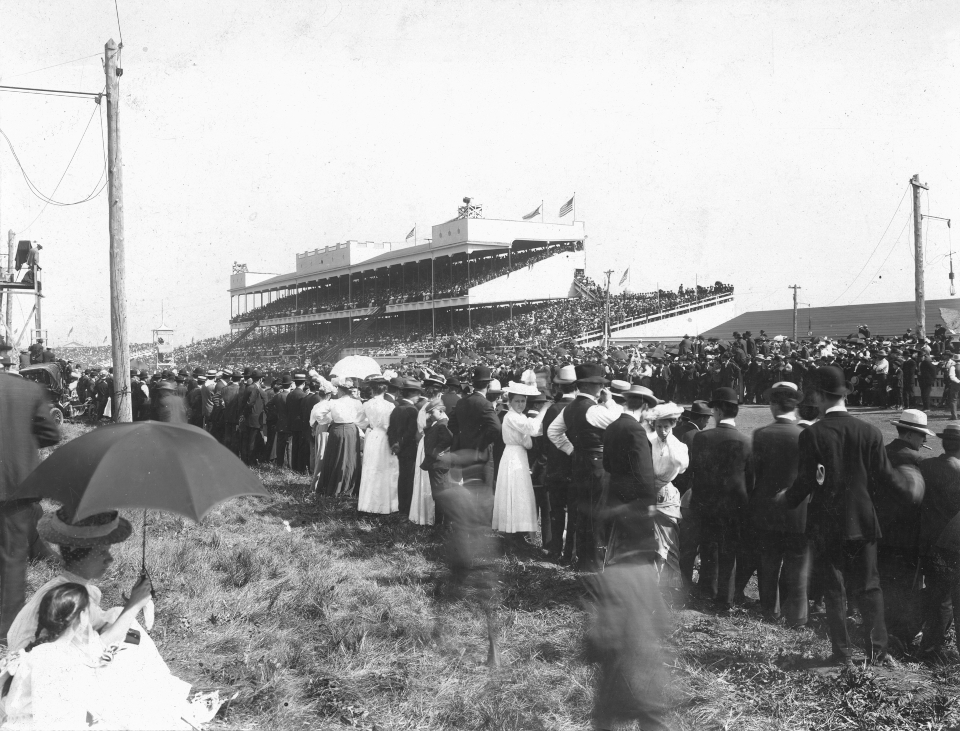
1906: In the early years, audiences were allowed to view Grandstand races and entertainment on both sides of the track.

1906: Tens of thousands witnessed the world-famous horse Dan Patch race a world record time for one mile of one minute, 55 seconds.
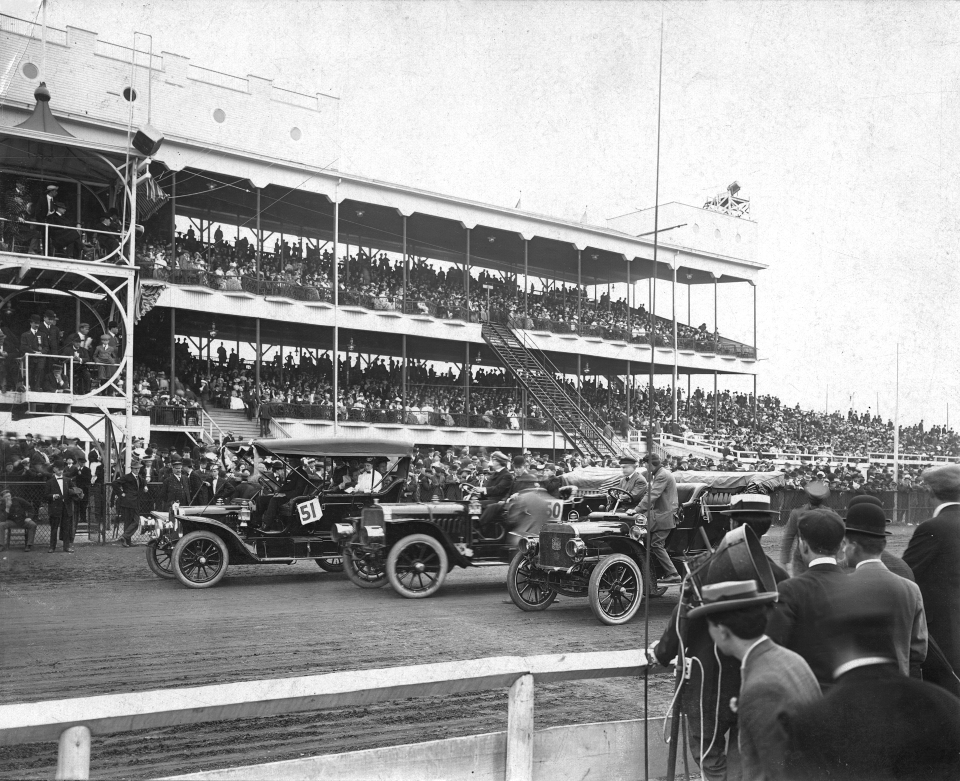
1907: The first year of auto races at the State Fair. It was the beginning of nearly a century of racing, with Walter Christie, Ralph DePalma and J.A. Clark being some of the first to race around the one-mile dirt track.

1908: Auto driver Ralph DePalma set a world record for one mile of 51 seconds.
1908: The second Grandstand (built in 1892) was deteriorating for several years and was considered condemned in December of 1908.
1909: The current Grandstand is constructed!
- Designed by St. Paul architect firm Reed & Stem, the Grandstand was constructed of reinforced steel and concrete, measuring 378 x 171 feet, and 105 feet high, with seating for approximately 13,000. Four stories in height, two were used for exhibition rooms.
- Built at an angle facing northwest, it provided a prime sightline of the one-mile racetrack.
- Excavation began in May of 1909, and part of the surface concrete of the main aisle was laid after 9 p.m. Sunday, Sept. 5, with the State Fair opening the following day at 8 a.m.

1909: A west-side section of the Grandstand under construction, photo taken Aug. 2.
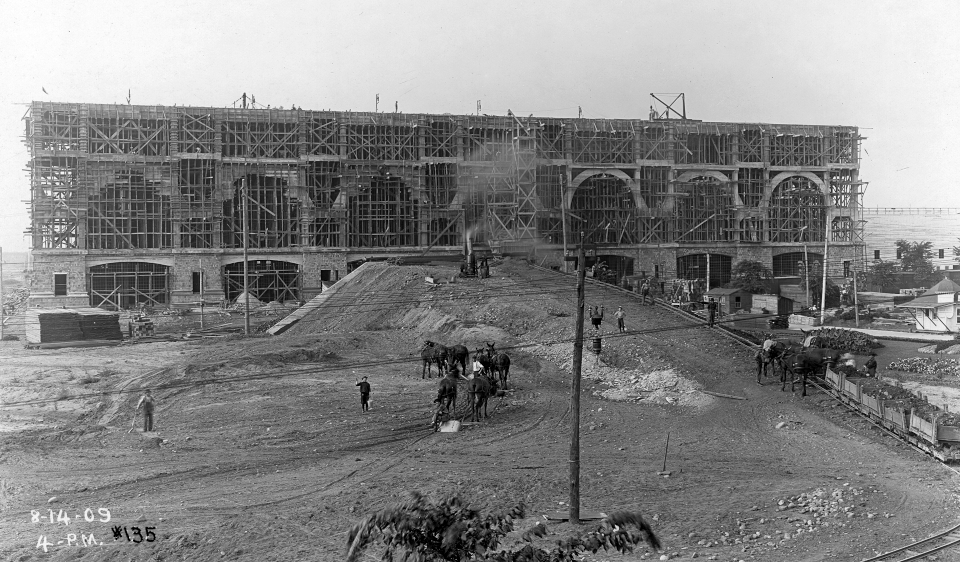
1909: The south side of the Grandstand under construction, photo taken on Aug. 14, just 22 days before the State Fair was to begin.
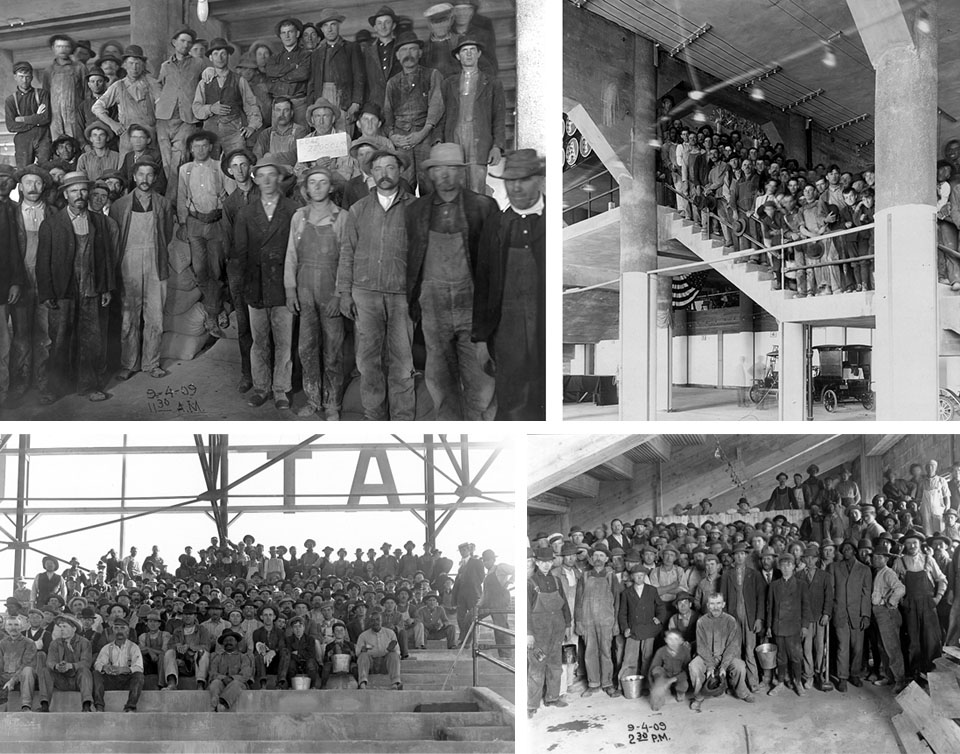
1909: Hundreds of masons, plasterers, joiners, laborers and carpenters put their efforts into constructing the Grandstand.

1909: A view from the stock barns looking north to the newly constructed (and current) Grandstand.
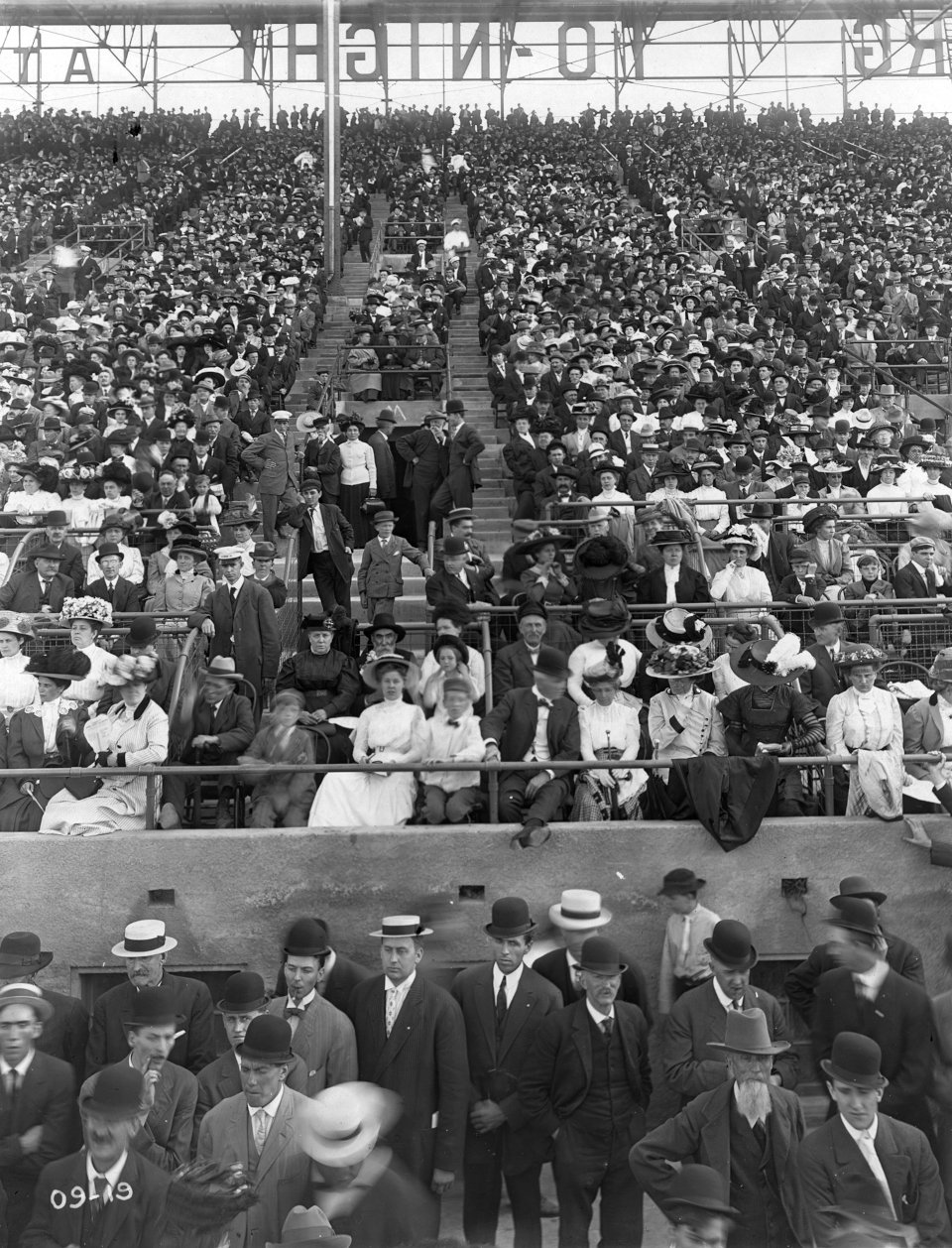
1909: The newly constructed Grandstand attracted throngs of people to see races and the evening show, “Minnesota at Gettysburg.”
1910-1939
1910: The first airplane flight in Minnesota was held at the Minnesota State Fairgrounds during the Twin City Aviation Meet, held June 22-25. Aviation became a part of the State Fair’s entertainment for decades to come.

1910: The Grandstand marquee advertised the evening show, “The Pageant of Nations,” that played nightly. Hundreds of costumed participants along with parade floats and painted backdrops represented seven countries – United States, Germany, Sweden, China, Japan, France and Italy.
1910: President Taft visited the State Fair and spoke to a Grandstand crowd on Sept. 5.
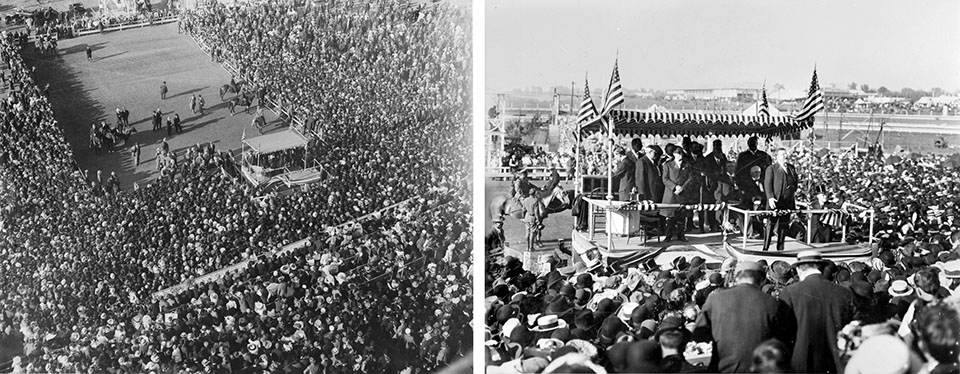
1910, 1912: Teddy Roosevelt returned to the State Fair. On Sept. 6, 1910, approximately 60,000 people in the Grandstand and its surroundings gathered to hear him speak.

1912: The streetcar tracks lead right up to the Grandstand Ramp, at the time made of berm earth.

1913: Motorcycle races, although not as common as horse or auto, entertained audiences as they zoomed around the track.
1922: On a sweltering 98-degree day, Vice President Calvin Coolidge gave a speech to the Grandstand audience. Forty minutes into his speech, he started to get heckled: “Let’s go on with the races.”

1925: Sig Haugdahl, Fred Horey and Gus Schrader zipped around the first turn. Other well-known auto racers included Barney Oldfield, Eddie Rickenbacker, Louis Chevrolet, Emory Collins – bringing tens of thousands of people to watch them race around the track, often breaking track records.

1927: An airplane landing field was between the one-mile track and the north side of the half-mile track. It was used for flight exhibits, thrill shows and the Aircraft Show building on Machinery Hill.
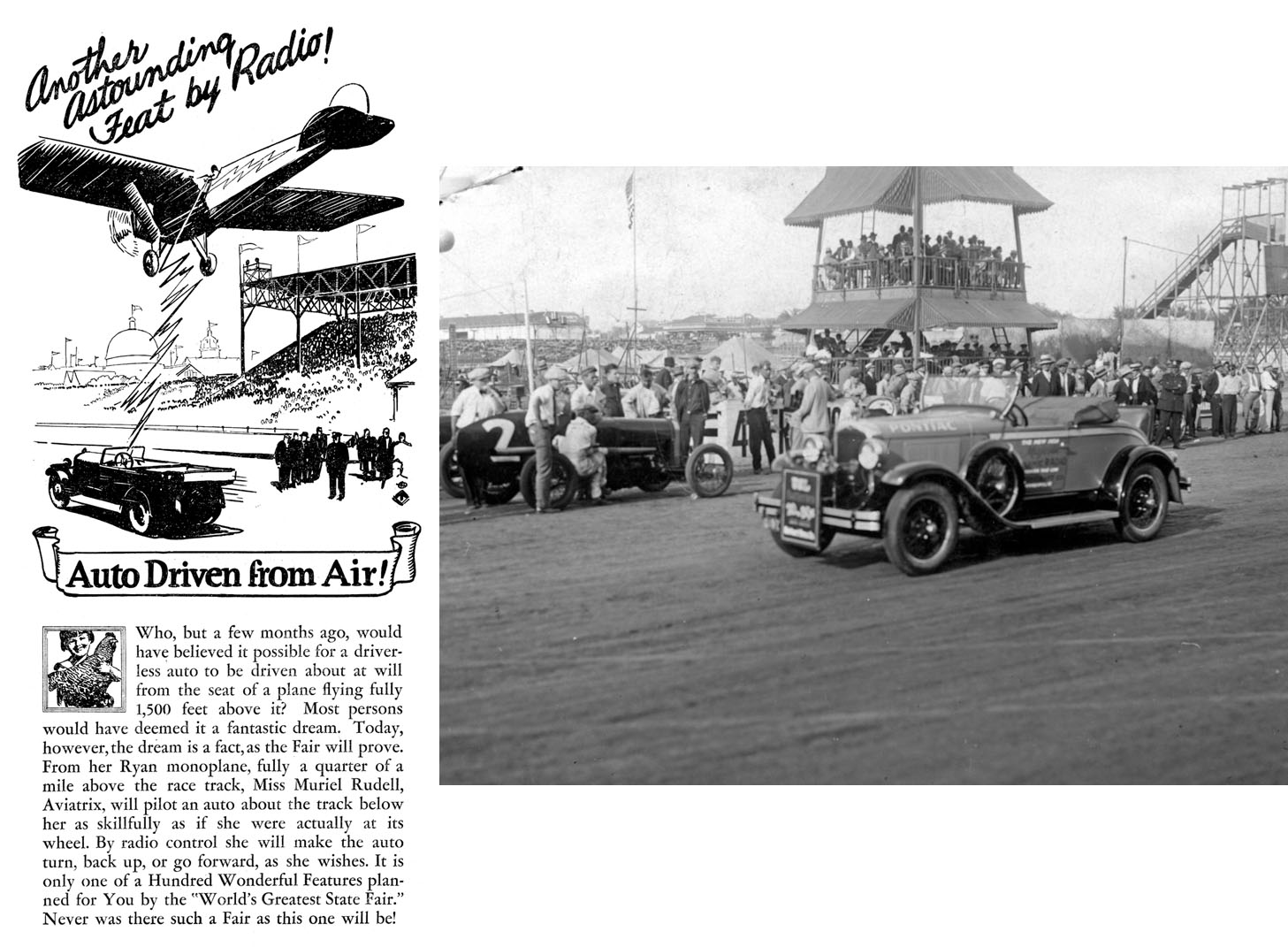
1928: An advertisement enticed people to see the “Phantom Car” driven via radio from an airplane piloted by Miss Muriel Rudell.

Circa 1928: Livestock parades, draft horse teams and marching bands entertained Grandstand audience between races and vaudeville shows.
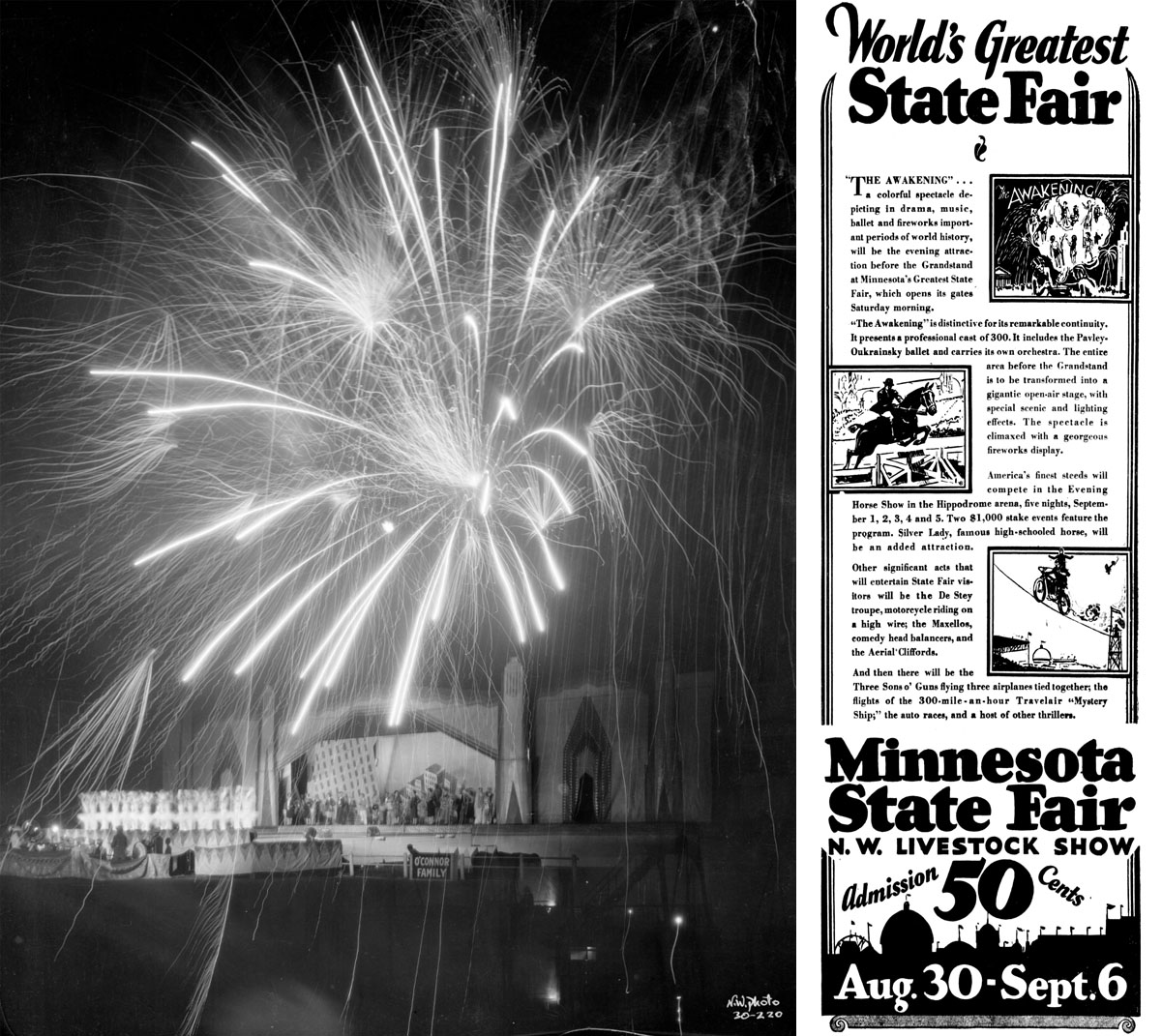
1930: “The Awakening” was the nightly entertainment consisting of historical episodes and fireworks.
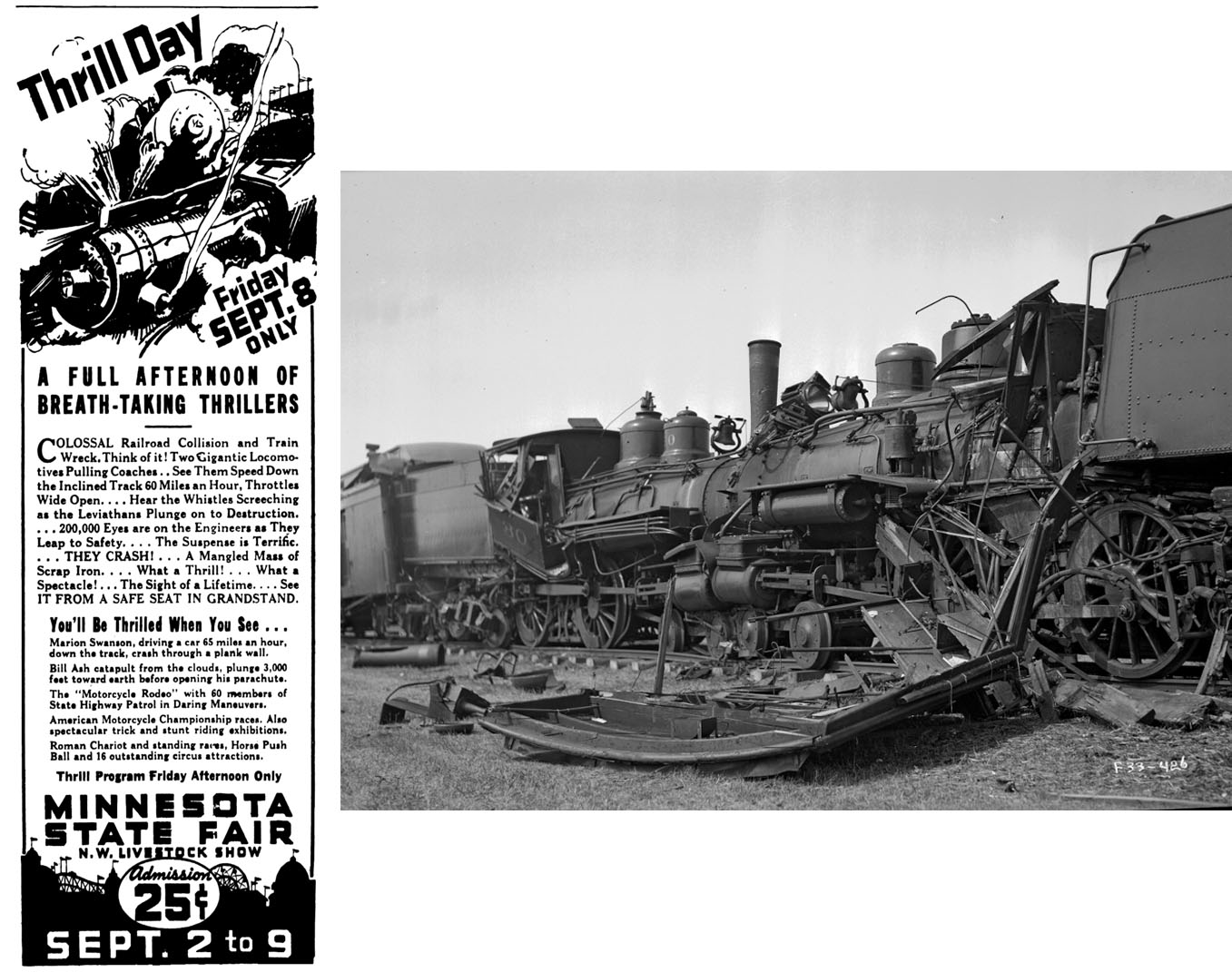
1933: A new feature called “Thrill Day” consisted of chariot races, motorcycle maneuvers, a parachute jump and crashing locomotives as the finale. A thrill day became a Grandstand staple for decades to come.
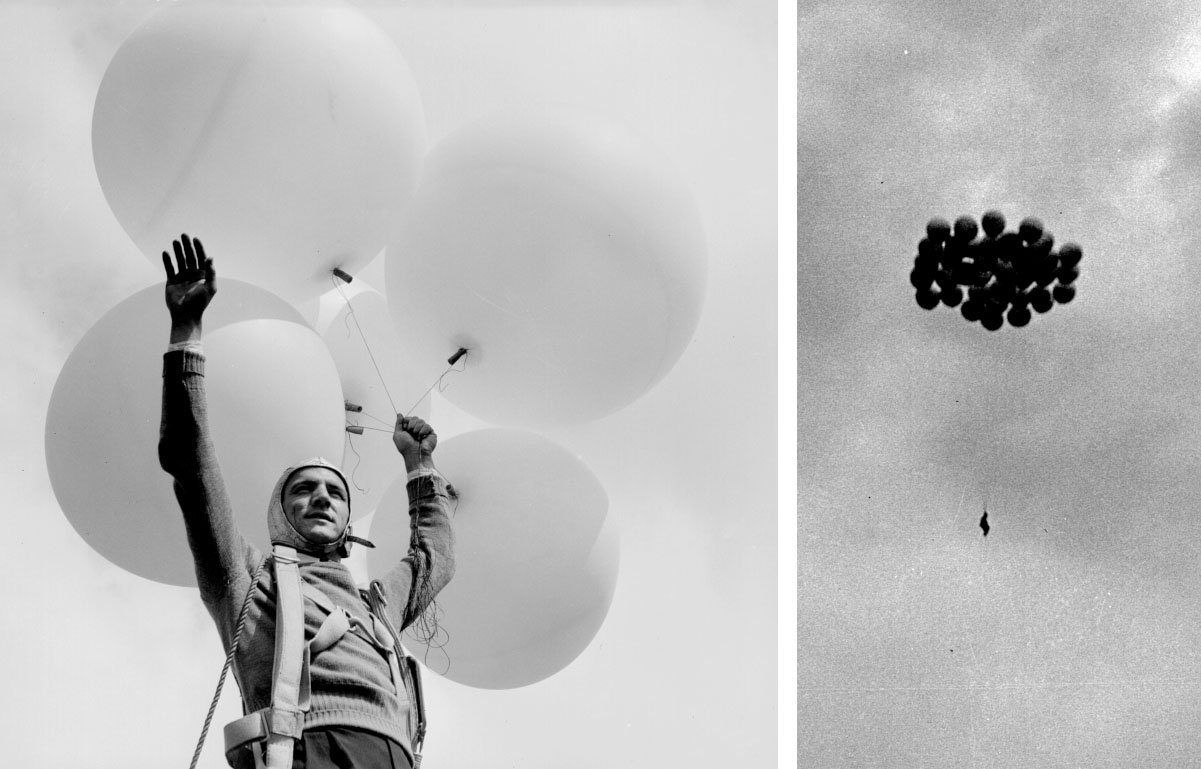
1939: As part of Thrill Day, Earl Barrows ascended 6,000 feet with a cluster of hydrogen-filled balloons before cutting them loose and dropping in his parachute.

1939: On Children’s Day, a free daytime show catered to kids and featured circus and vaudeville acts.
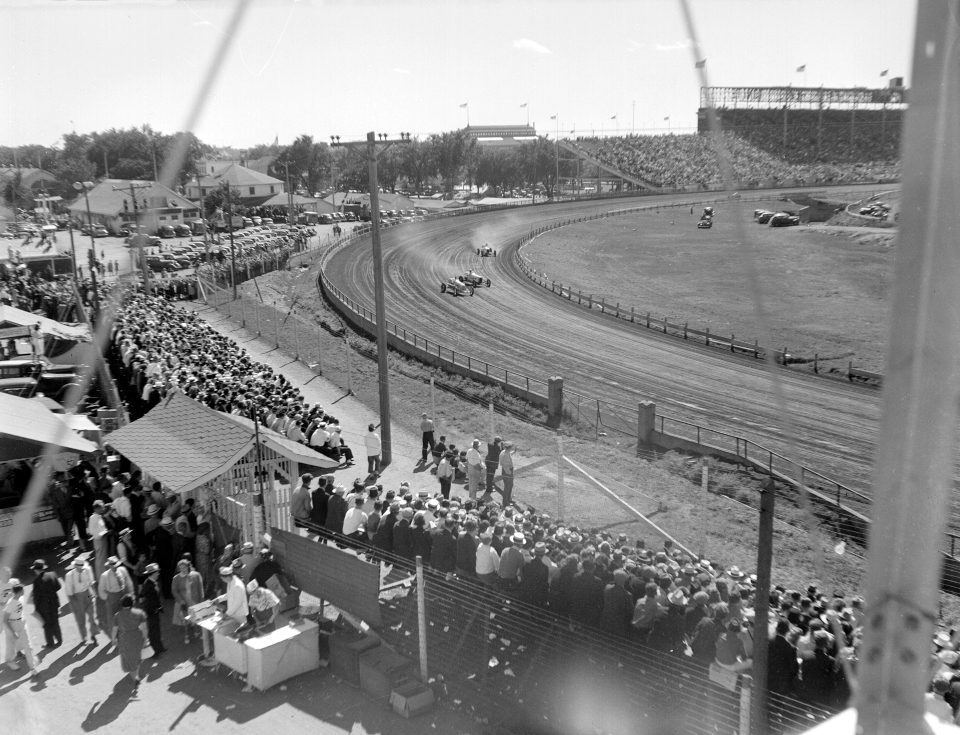
1939: Last year of the one-mile racetrack. The removal of the track allowed Underwood Street to extend further north on the fairgrounds.
1940-1959

1940: A new half-mile track was built with steep banks around the curves for higher speeds.

1940: The State Fair Revue nightly show included the Vernon Ames Ballet dancers.

1940: Works Progress Administration (WPA) exhibits on the first floor of the Grandstand featured cultural accomplishments, including the art project and county historical society work.

1941: The fine arts exhibition moved to the ground floor of the Grandstand. It included a juried show, loaned works from out of state, and “one-man shows” with Marvel Gabriel Midtby of Duluth, Aaron Kurzen of St. Paul, Ada Wolfe of Minneapolis, Laura Leedy of St. Paul, and Alfred Terry of Minneapolis.
1942: The Office of Defense Transportation (ODT) banned auto racing to help conserve rubber during World War II.

1942: One of the 14 harness races that were held over three days of the fair.

1943: Military exhibits were held throughout the fairgrounds during World War II, including the Grandstand.

1947: General Dwight D. Eisenhower toured the Minnesota State Fair and gave a speech to the Grandstand audience. In part, “It is the first state fair I’ve ever attended, and I hope I have made a good beginning by visiting the greatest first. Such a fair represents the things that America needs.”
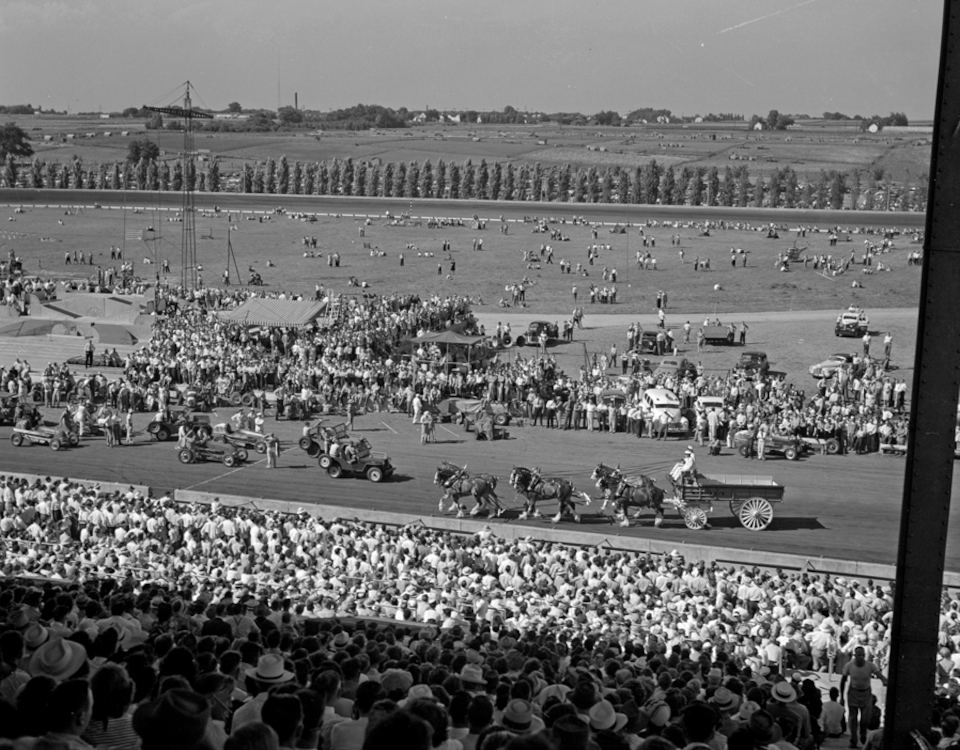
1947: After several years of an automobile racing ban and canceled fairs (in ‘45 due to World War II, ‘46 for the polio epidemic), people were excited to return. Twenty Grandstand performances of auto races, horse races, thrill shows, a band tournament, and an elaborate stage revue with fireworks brought a total record attendance of 324,274.
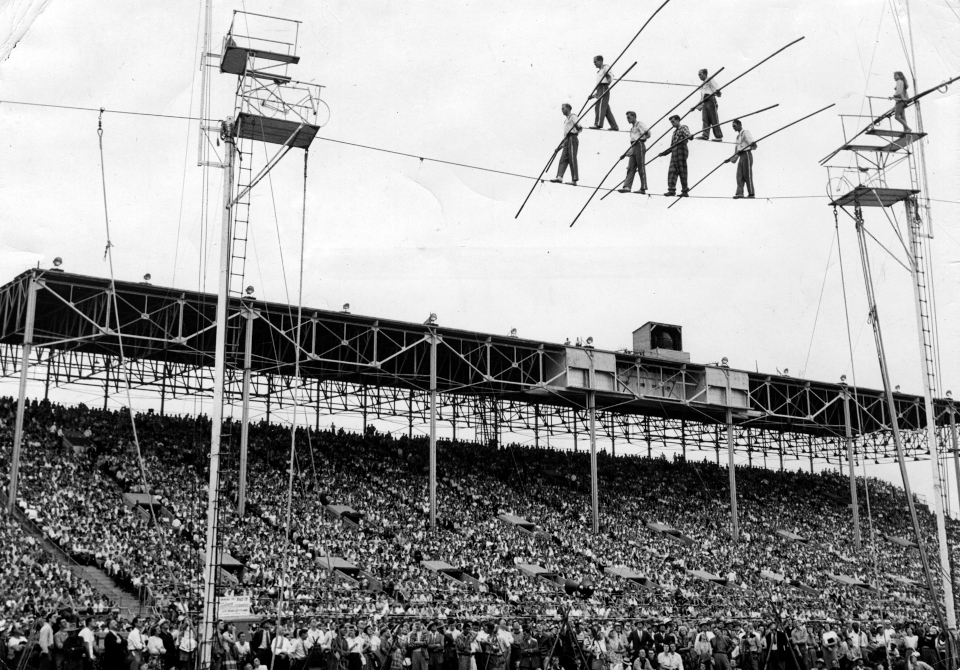
1949: The Great Wallendas performed the highwire act “seven” 60 feet in the air.
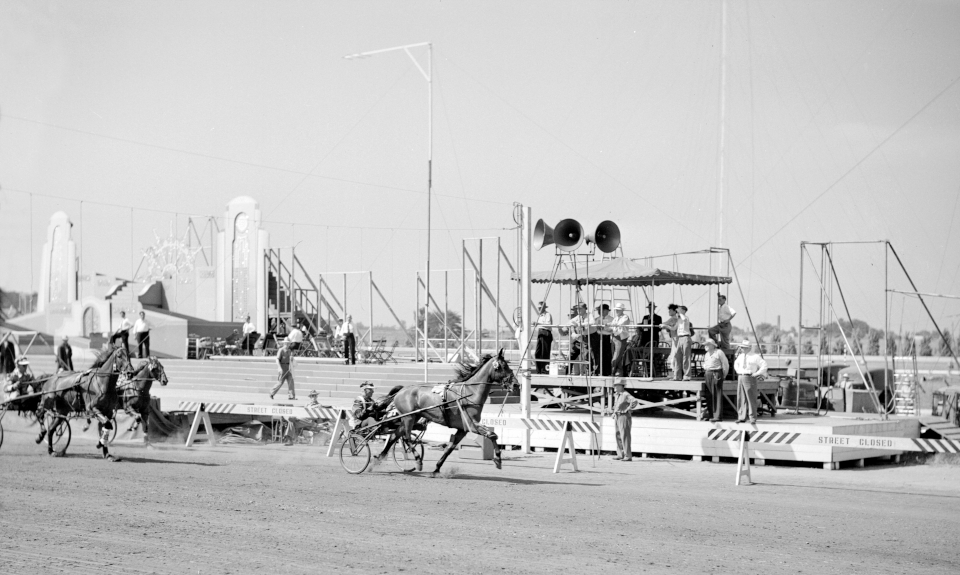
1949: The last year of horse races at the Grandstand; focus shifted to automobiles.
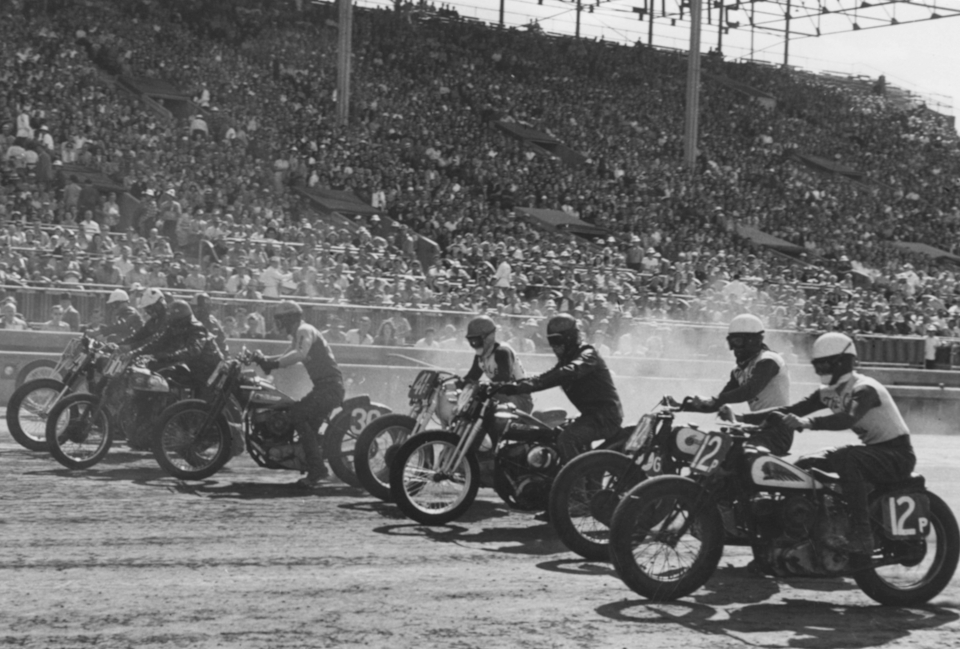
1953: American Motorcyclist Association (AMA) races were held on Sept. 5, with a thrill show afterward.
1950s-1980s: Aut Swenson’s Thrillcade and Joie Chitwood’s Thrill Show entertained audiences for decades with controlled car crashes, two-wheel automobile driving, mid-air jumps and more.
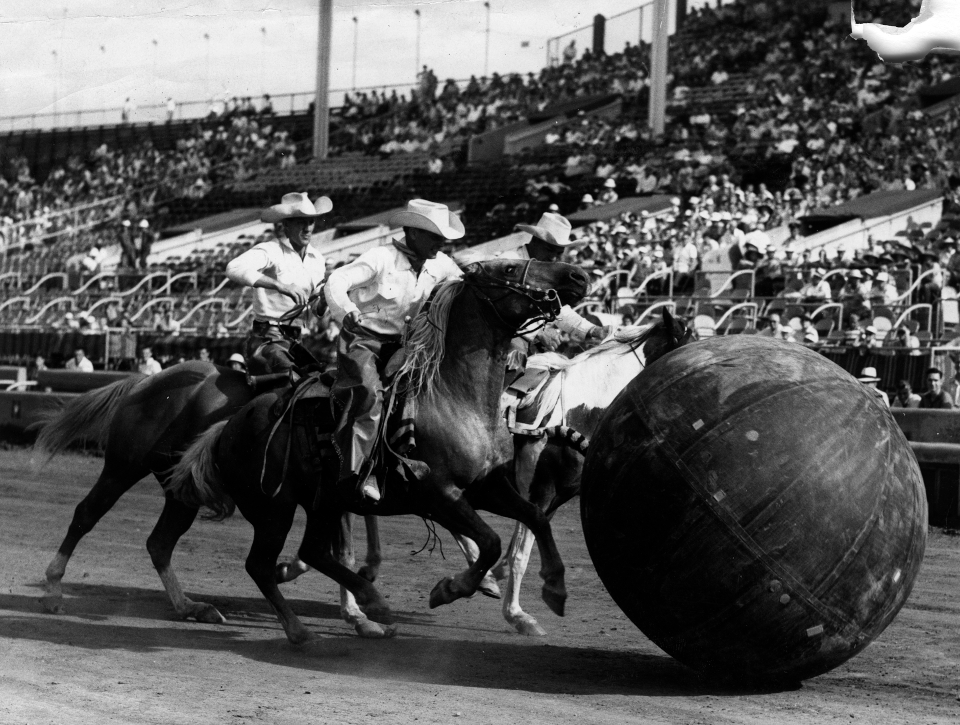
1956: As a part of Aut Swenson’s Thrillcade, horse and rider teams of two try to make a goal in the battle ball competition.

1956: The State Fair Revue included an orchestra, dancers, tumblers and a comedic opera.

Circa 1950s: Stock cars kicked up dust while racing around the track.
1960-Present

Circa 1960: Oblique view overlooking the half-mile dirt racetrack, Grandstand and beyond.

Circa 1960: People watched a stock car race on the dirt racetrack.

1962: Billboard above the Grandstand Ramp advertised the new format for the Grandstand evening show featuring a “name star.” Dennis Day, Jane Russell and Jimmy Dean performed.

1962: Cars lined up for a race around the track.

1962: Princess Kay Kathleen Hjelle and Jimmy Dean celebrated with Mert Williams (right), who was all smiles after winning the 350-lap North Star feature race.

1963: St. Paul’s Jerry (Scratch) Daniels, center, won the 15-lap feature race on Aug. 26, with a new track record of 6:05.38. He posed with other St. Paul drivers Bill Sierks and Jerry Richert.

1964: A new asphalt racetrack was built, along with a pit retaining wall, a lagoon in the infield, and upgrades to the restrooms and dressing rooms underneath the performance stage.
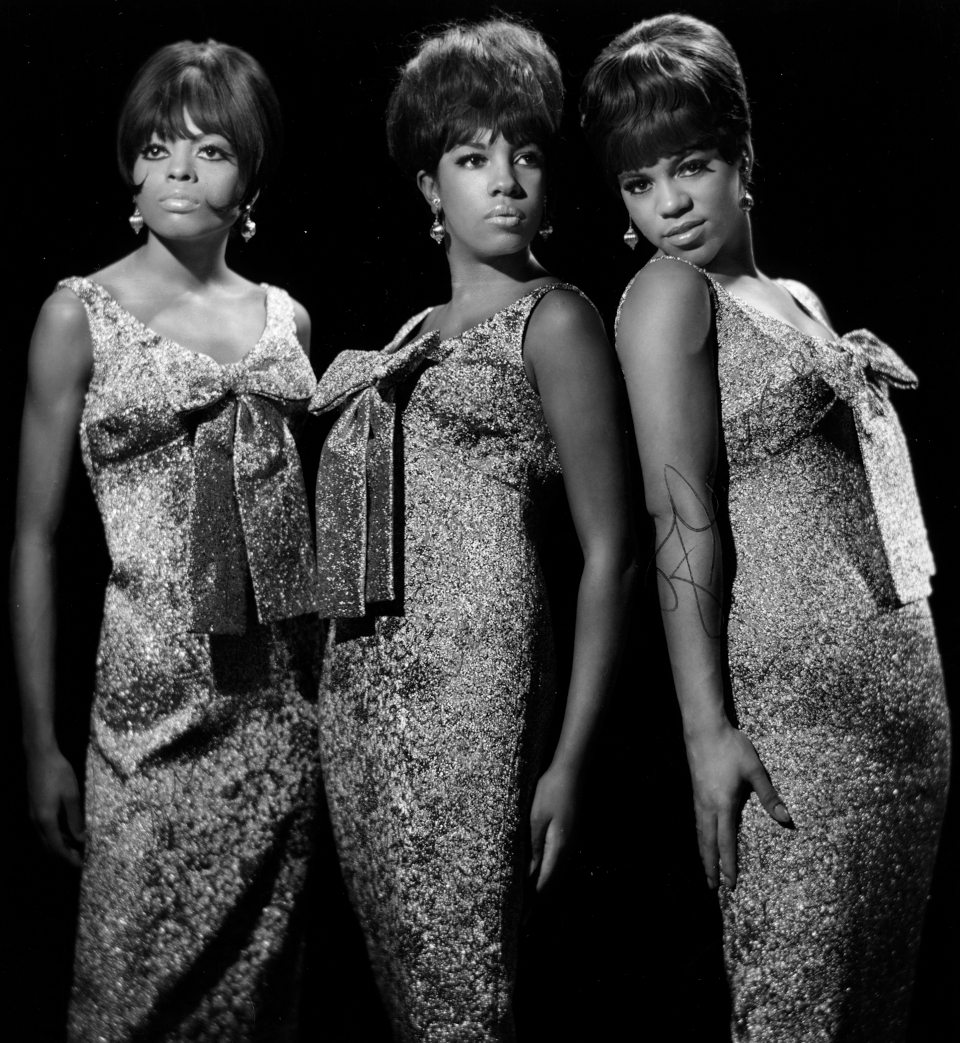
1966: The Supremes headlined the “The North Star Spectacular” evening Grandstand show for the first five nights of the State Fair.
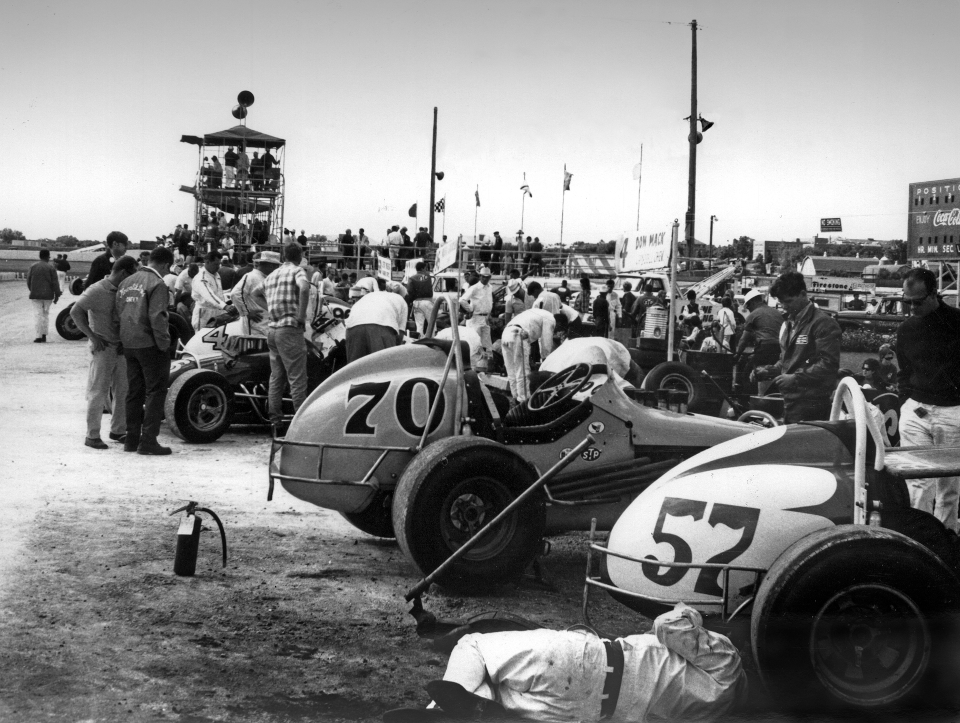
1970: The pit crews made sure the automobiles were in working order – refueled, tires changed, repairs made, and more.
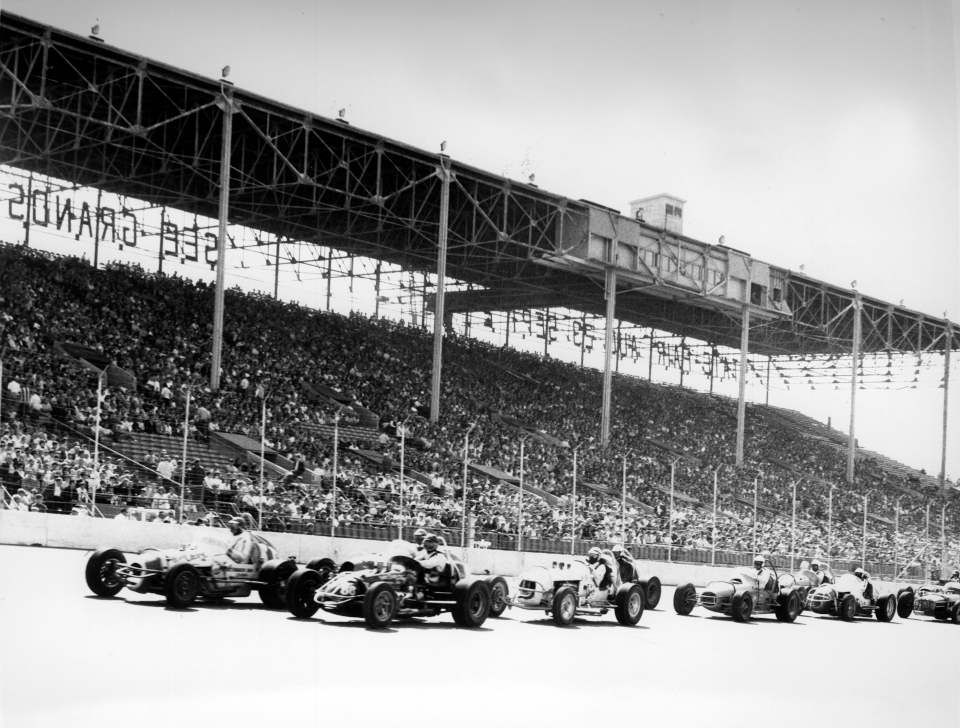
1970: Sprint cars raced around the track.
1974: The first year Grandstand entertainment featured a different performer each night.

1983: Alabama performed 19 times at the Grandstand, the most of any performer. The first was in 1983, the last in 2016.
1985: Auto racing became a one-day-only event, held on Labor Day.

1993-1995, 2007: B.B. King performed four times at the Grandstand – with the Blues Festival for the first three, then with Al Green and Etta James and her Roots band.
1997: The Amateur Talent Contest finals moved to the Grandstand, and the free event welcomed a crowd of approximately 10,000 people.
2000: All-time-record Grandstand crowd of 22,117 attended Christina Aguilera’s concert.
2002: Last year of automobile races at the State Fair.
2002: On Dec. 11, demolition work began on the Grandstand bleachers. It was the beginning of a multiyear project that included construction of stair towers, ramps and elevators.
2003: Grandstand plaza seating was added.
2013: Macklemore & Ryan Lewis set the attendance record in the current Grandstand seating configuration with a sold-out crowd of 16,529.
2017: The Veranda opened on the second floor of the Grandstand as a new shop-eat-sip destination with a balcony patio area.

2023: Brandi Carlile played a sold-out Grandstand show to 13,414 in attendance. She also performed in 2010 and 2019.
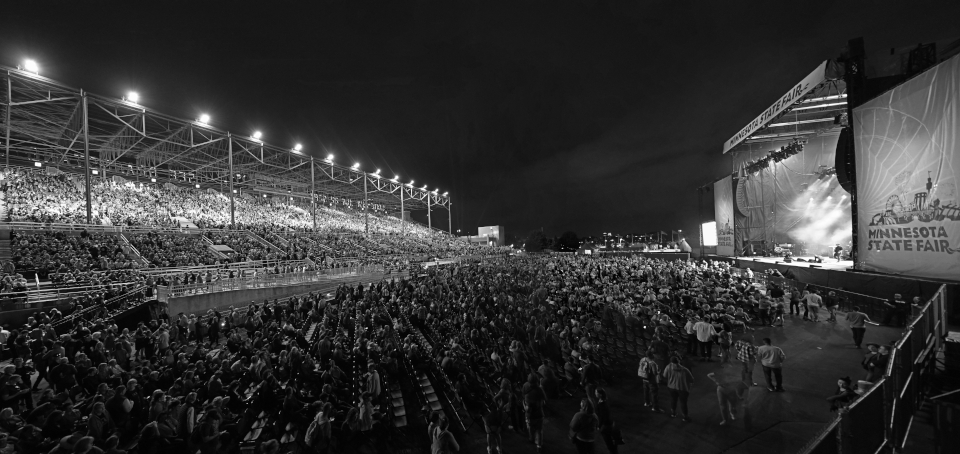
For a list of all Grandstand entertainers from 1962 to present, visit our Media Room page.
